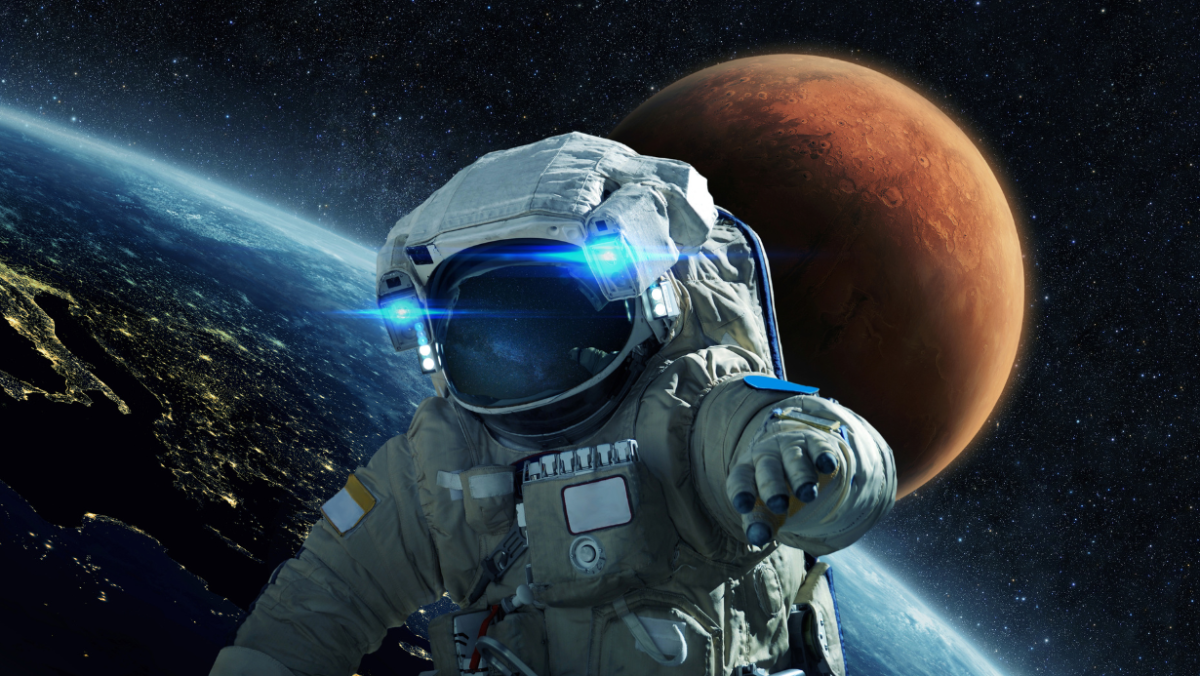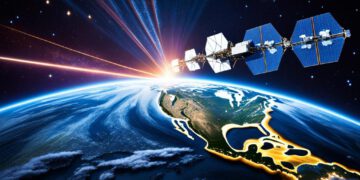Consider this: in 2004, the European Space Agency (ESA) launched Rosetta, an ambitious spacecraft designed to chase, orbit, and land on a comet. This marked a significant leap in mankind’s quest to understand the universe.
As you journey through the complexities of space exploration, you’ll uncover how the ESA, a lesser-known yet vital player, has been pushing the boundaries of our cosmic understanding. You’ll discover the pioneering technologies they’ve introduced, their profound insights into black holes, and their relentless search for extraterrestrial life.
But what if you found out that this is just the tip of the iceberg when it comes to ESA’s contributions? Stay with us, as there’s much more to explore about this unsung hero of space science.
Understanding ESA’s role in space exploration
You mightn’t realize it, but the European Space Agency (ESA) plays a pivotal role in unraveling the mysteries of the universe through their advanced space exploration programs. Though you’re likely more familiar with NASA, don’t underestimate ESA’s contributions. They’re not just a silent partner, they’re a driving force.
Through collaborations, like the Hubble Space Telescope with NASA, or solo missions like Mars Express, they’re making significant strides in space science. You can imagine them as the detectives of the cosmos, piecing together the universe’s grand puzzle. With every mission, they’re uncovering clues about our solar system and beyond.
ESA’s Mars Express, for instance, provided high-resolution images and data of Mars’ surface, leading to groundbreaking discoveries. They’ve also launched the Gaia mission, aiming to create the most detailed 3D map of our galaxy yet.
This isn’t just about exploring space, it’s about understanding our place in it.
Technological breakthroughs by ESA
While unraveling the universe’s mysteries, ESA has also been the catalyst for numerous technological breakthroughs in the world of space exploration. You might be amazed to learn that their innovations extend well beyond the realm of space telescopes and robotic explorers.
One of their groundbreaking achievements is the:
- Advanced Transfer Vehicle (ATV): This was the most complex vehicle ever developed in Europe, used to transport supplies to the International Space Station.
You can’t overlook their contribution to:
- Satellite technology: They’ve successfully developed and launched the Galileo satellite navigation system, which rivals the American GPS system.
And, let’s not forget the:
- Space-based telescopes: The ‘Herschel’ and ‘Planck’ missions have advanced our understanding of the universe by leaps and bounds, thanks to their innovative technology.
These examples only scratch the surface of ESA’s technological prowess. Their work has transformed our understanding of space, and they continue to push boundaries in technological innovation. They’re not just exploring the universe; they’re redefining how we do it.
Probing the mysteries of black holes
Now let’s delve into how ESA is probing the mysteries of black holes, using cutting-edge technology and innovative research methods. You see, black holes, with their extreme gravitational pull and ability to bend space-time, have always fascinated scientists. They’re elusive, powerful, and house secrets to our universe’s origins.
ESA has launched missions like XMM-Newton and Integral to study these cosmic wonders. You’d be amazed, but these spacecrafts can detect high-energy radiation from objects billions of light years away. They’ve provided unprecedented data about black holes, helping us understand their behavior and the high-energy physics involved.
But it doesn’t stop there. ESA’s upcoming mission, Athena, will map hot gas structures and seek out supermassive black holes. Imagine being able to uncover the role black holes play in the formation of galaxies!
ESA’s search for extraterrestrial life
In addition to unraveling the mysteries of black holes, ESA is also at the forefront of the quest for extraterrestrial life. You’ll be amazed at the lengths and depths they’ve gone to in this quest.
They’ve got several missions and projects that focus on this quest:
- *ExoMars Rover*: This rover is equipped to look for signs of life on Mars. It’s got:
- A drill to access underground samples
- An advanced lab to analyze these samples
- *JUpiter ICy moons Explorer (JUICE)*: This mission aims to explore Jupiter’s icy moons, which might harbor life. Here’s what it’s set to do:
- Investigate the potential habitability of these moons
- Study the dynamics of Jupiter’s atmosphere
- *CHEOPS*: This mission is all about looking for exoplanets. It’s equipped to:
- Characterize known exoplanets in detail
- Search for potential signs of life on these planets
You’re participating in an incredible journey as ESA peels back the layers of the universe. It’s not just about understanding space – it’s about searching for our place within it.
Studying the stars with ESA
Let’s dive into how ESA studies the stars, using cutting-edge technology to unlock their secrets. You’d be amazed at the work they do, harnessing advanced telescopes and innovative satellites. They’re peering deep into the universe, capturing images and data that were once thought impossible.
ESA’s Gaia mission, for example, is mapping the stars of our galaxy in unprecedented detail. It’s giving you a 3D view of the Milky Way like you’ve never seen before. You’re not just seeing the stars but understanding their positions, distances, movements, and even their physical properties.
Then there’s the Herschel Space Observatory, which focuses on the coldest and dustiest areas of space. It’s revealing new insights about the formation of stars and the evolution of galaxies. You can now see how stars like our sun were born and have evolved over time.
And don’t forget about the XMM-Newton, an X-ray observatory that’s observing high-energy universe. It’s unlocking the secrets of black holes, neutron stars, and even whole galaxies.
ESA’s work isn’t just about studying the stars, it’s about understanding our place in the universe. You’re not just a spectator, you’re part of the journey.
Conclusion
So, you’ve hitched a ride with ESA, eh? You’ve peeked into black holes, searched for space buddies, and gazed at stars. All that with the European Space Agency’s tech wizardry. Feels like you’ve unlocked the universe’s secrets, doesn’t it? Well, keep your spacesuit on, ’cause ESA’s just warming up. Who knows what cosmic shenanigans they’ll pull next?
Buckle up, it’s gonna be a wild ride through the final frontier!
Frequently Asked Questions
What Is the Annual Budget of the European Space Agency (Esa)?
You’re asking about the annual budget of the European Space Agency. It’s not a fixed amount, but in 2021, they’ve got a budget of approximately 6.68 billion euros. It does fluctuate based on their projects.
Who Are Some Notable Astronauts Associated With Esa?
You’re probably aware of some space legends associated with ESA. Notable astronauts include Samantha Cristoforetti, the coffee-drinking record-breaker, and Tim Peake, who’s practically a household name after his stint on the International Space Station.
What Future Missions Does the ESA Have Planned?
You’re curious about ESA’s future missions! They’ve several planned, like the ‘JUICE’ mission to Jupiter’s moons, the ‘BepiColombo’ mission to Mercury, and the ‘ExoMars’ mission to search for life on Mars. Exciting times ahead!
How Does ESA Cooperate With Other International Space Agencies?
You’re asking about ESA’s cooperation with other space agencies. Well, they collaborate extensively, sharing knowledge, resources, and technology to advance space exploration. It’s a global effort to unlock the mysteries of the universe.
What Is the Process for a Country to Become a Member of Esa?
To join ESA, your country first becomes a ‘Cooperating State’. You’ll then sign a plan detailing five years of progressive steps. After a successful review, you’re invited to become a full member. It’s quite a process!










